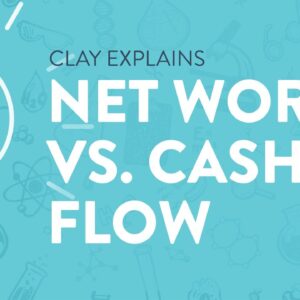
Outline:

1: The Ultimate Guide to Retirement Accounts: How to Choose the Right One
Introduction
- What are Retirement Accounts?
- Why Retirement Accounts Are Essential for Your Future
- The Importance of Choosing the Right Retirement Account
2: Types of Retirement Accounts
- Overview of Different Retirement Accounts
- Tax-Advantaged vs. Non-Tax-Advantaged Accounts
3: 401(k) Retirement Account
- What is a 401(k)?
- Traditional 401(k) vs. Roth 401(k)
- Contribution Limits and Employer Matching
- Pros and Cons of 401(k) Accounts
4: Individual Retirement Accounts (IRA)
- What is an IRA?
- Traditional IRA vs. Roth IRA
- Contribution Limits for IRAs
- Pros and Cons of IRAs
5: SEP Individual Retirement Accounts
- What is a SEP IRA?
- Who Should Consider a SEP IRA?
- Contribution Limits and Tax Benefits
- Pros and Cons of SEP IRAs
6: SIMPLE Individual Retirement Accounts
- What is a SIMPLE IRA?
- How SIMPLE IRA Works for Small Businesses
- Contribution Limits and Employee Benefits
- Pros and Cons of SIMPLE IRAs
7: 403(b) Retirement Plan
- What is a 403(b)?
- Differences Between 401(k) and 403(b)
- Contribution Limits and Tax Benefits
- Pros and Cons of 403(b) Plans
8: Understanding the Tax Benefits of Retirement Accounts
- Tax-Deferred vs. Tax-Free Growth
- The Power of Compound Interest in Tax-Advantaged Accounts
- How to Maximize Your Tax Benefits with Retirement Accounts
9: How to Choose the Right Retirement Account
- Assessing Your Retirement Goals
- Factors to Consider: Age, Income, and Tax Bracket
- How to Balance Contributions Between Different Accounts
10: Risk Tolerance and Investment Strategy For Individual Retirement Accounts
- How Risk Affects Your Retirement Account Choices
- Diversifying Your Retirement Portfolio
- What to Invest in Within Your Retirement Account
11: Employer-Sponsored Retirement Accounts
- Understanding Employer Contributions
- How to Maximize Employer Matching Contributions
- What to Do if You Change Jobs
12: How Much Should You Contribute to Your Retirement Account?
- The Importance of Regular Contributions
- Catch-Up Contributions for Those Over 50
- Setting Contribution Goals Based on Your Retirement Timeline
13: Avoiding Common Mistakes with Retirement Accounts
- Not Contributing Enough or At All
- Withdrawing Funds Too Early
- Ignoring Fees and Expenses
14: How to Make the Most of Your Retirement Savings
- Reinvesting Dividends and Interest
- Managing Withdrawals in Retirement
- Withdrawal Strategies to Minimize Taxes
15: The Future of Retirement Accounts
- New Trends in Retirement Savings
- Changes in Tax Laws and Their Impact on Retirement Accounts
- Preparing for Future Economic Uncertainties
16: Conclusion
- Recap of Key Takeaways
- Why Choosing the Right Retirement Account Is Crucial for Financial Security
- Final Tips for a Successful Retirement Savings Strategy
17: FAQs
- What is the best retirement account for someone just starting out?
- How do I decide between a Roth IRA and a Traditional IRA?
- Can I have more than one retirement account?
- What is the catch-up contribution for those over 50?
- What happens if I withdraw from my retirement account before retirement?
The Ultimate Guide to Retirement Accounts: How to Choose the Right One
Introduction
When it comes to planning for retirement, one of the most important decisions you’ll make is choosing the right retirement account. Retirement accounts provide an efficient way to save for your future while enjoying various tax benefits. However, with so many types of accounts available, it can be difficult to decide which one is best for your needs. This ultimate guide to retirement accounts will help you understand the different options, how to choose the right one for you, and the factors you need to consider in your retirement planning journey.
Whether you’re just starting your career or are approaching retirement, choosing the right retirement account is essential to ensuring that your financial future is secure. By taking a strategic approach and understanding the unique benefits of each type of account, you’ll be able to maximize your retirement savings.
Types of Retirement Accounts
There are many types of retirement accounts, each offering different benefits depending on your goals, income, and employment status. Understanding the key differences between these accounts will allow you to make the best decision for your financial future.
Overview of Different Retirement Accounts
Some of the most popular retirement accounts include:
- 401(k)
- IRA (Individual Retirement Accounts)
- SEP IRA
- SIMPLE IRA
- 403(b)
Each of these accounts serves different purposes and offers different advantages depending on your specific needs.
Tax-Advantaged vs. Non-Tax-Advantaged Accounts
Tax-advantaged accounts like 401(k) and IRA allow you to defer taxes until retirement, meaning your investments grow tax-free or tax-deferred until you make withdrawals. Roth IRA accounts, on the other hand, are funded with after-tax dollars, allowing for tax-free withdrawals in retirement.
Non-tax-advantaged accounts do not offer the same benefits but may still be part of an overall investment strategy. These include brokerage accounts and non-qualified annuities, which don’t offer immediate tax advantages but may be used to grow wealth outside of traditional retirement savings vehicles.
401(k) Retirement Account
A 401(k) is one of the most widely used retirement accounts in the United States, particularly among employees of larger companies.
What is a 401(k)?
A 401(k) is an employer-sponsored retirement account where employees contribute a portion of their income to the account, often on a pre-tax basis. The contributions and earnings grow tax-deferred until retirement.
Traditional 401(k) vs. Roth 401(k)
- Traditional 401(k): Contributions are made with pre-tax dollars, reducing your taxable income for the year. You pay taxes on the withdrawals during retirement.
- Roth 401(k): Contributions are made with after-tax dollars, but qualified withdrawals in retirement are tax-free.
Contribution Limits and Employer Matching
The annual contribution limit for a 401(k) is generally higher than for other retirement accounts. For 2021, you can contribute up to $19,500, with an additional $6,500 catch-up contribution for those over 50. Many employers also match a portion of your contributions, which is essentially “free money” for your retirement.
Pros and Cons of 401(k) Accounts
Pros:
- High contribution limits.
- Employer matching contributions.
- Tax-deferred or tax-free growth depending on the plan type.
Cons:
- Limited investment choices compared to IRAs.
- Required minimum distributions (RMDs) starting at age 72.
READ MORE: Understanding Insurance: Life, Health, and Car Insurance Explained.
Individual Retirement Accounts (IRA)
An IRA is an individual retirement account that you can open outside of your employer, offering greater flexibility than a 401(k).
What is an IRA?
An IRA is a personal retirement account that allows you to contribute a portion of your income toward retirement savings. You can choose from a Traditional IRA or a Roth IRA, depending on your financial goals.
Traditional IRA vs. Roth IRA
- Traditional IRA: Contributions are made with pre-tax dollars and are tax-deductible, reducing your taxable income. However, withdrawals during retirement are taxed as ordinary income.
- Roth IRA: Contributions are made with after-tax dollars, but the earnings grow tax-free, and qualified withdrawals in retirement are tax-free.
Contribution Limits for IRAs
The contribution limit for an IRA is $6,000 annually, with a $1,000 catch-up contribution for those over 50.
Pros and Cons of IRAs
Pros:
- Greater investment flexibility than 401(k) accounts.
- Tax-deferred growth for Traditional IRA or tax-free withdrawals for Roth IRA.
Cons:
- Lower contribution limits compared to 401(k) accounts.
- Roth IRA eligibility is income-dependent.
SEP IRA
A SEP IRA (Simplified Employee Pension IRA) is designed for self-employed individuals and small business owners.
What is a SEP IRA?
A SEP IRA is a retirement account that allows business owners to contribute to their own and their employees’ retirement savings. It’s an easy-to-administer plan with high contribution limits.
Who Should Consider a SEP IRA?
A SEP IRA is ideal for self-employed individuals or business owners who want to contribute a large amount to their retirement without the complexity of a 401(k).
Contribution Limits and Tax Benefits
For 2021, you can contribute up to 25% of your income, with a maximum contribution of $58,000. Contributions are tax-deferred, meaning you don’t pay taxes until you withdraw funds.
Pros and Cons of SEP IRAs
Pros:
- High contribution limits.
- Simple to set up and manage.
- Tax-deferred growth.
Cons:
- Only the employer can contribute, meaning employees don’t have the option to contribute.
- Limited to self-employed individuals or small business owners.
SIMPLE Individual Retirement Accounts
A SIMPLE IRA (Savings Incentive Match Plan for Employees) is designed for small businesses with fewer than 100 employees.
What is a SIMPLE IRA?
A SIMPLE IRA is an easy-to-administer plan that allows both employees and employers to contribute to retirement savings.
How SIMPLE IRA Works for Small Businesses
Employers must match employee contributions up to a certain percentage or make a fixed contribution, typically around 2% of each employee’s salary. Employees can contribute up to $13,500 annually, with an additional $3,000 catch-up contribution for those over 50.
Contribution Limits and Employee Benefits
- Employee contributions: Up to $13,500.
- Employer matching or contribution: Up to 3% of employee salary.
Pros and Cons of SIMPLE IRAs
Pros:
- Simple to set up and manage.
- Employer matching contributions.
Cons:
- Lower contribution limits compared to other plans.
- Required employer contribution.
403(b) Retirement Plan
A 403(b) is a retirement account available to employees of nonprofit organizations, schools, and some government workers.
What is a 403(b)?
A 403(b) plan is similar to a 401(k) but is designed for nonprofit organizations, public school employees, and some other government workers.
Differences Between 401(k) and 403(b)
While both plans allow tax-deferred contributions, 403(b) accounts often have lower administrative fees and may offer fewer investment options than a 401(k).
Contribution Limits and Tax Benefits
The contribution limit for a 403(b) plan is the same as a 401(k)—$19,500 for those under 50, with an additional $6,500 catch-up contribution for those over 50.
Pros and Cons of 403(b) Plans
Pros:
- Lower administrative fees.
- Tax-deferred growth.
Cons:
- Fewer investment options.
- No employer matching in some cases.
READ MORE: Financial Planning for Retirement: How to Secure Your Future at Any Age.
Understanding the Tax Benefits of Retirement Accounts
Tax advantages are one of the key reasons to contribute to retirement accounts.
Tax-Deferred vs. Tax-Free Growth
- Tax-deferred accounts, such as Traditional 401(k) and IRA, allow you to postpone taxes until retirement.
- Tax-free growth, as seen in Roth IRAs, lets your money grow without being taxed.
The Power of Compound Interest in Tax-Advantaged Accounts
The more you contribute, the greater the potential for compound interest to grow your retirement savings. Early contributions allow your funds to grow over time, benefiting from the tax advantages.
How to Maximize Your Tax Benefits with Retirement Accounts
By contributing the maximum allowed and utilizing tax-efficient withdrawal strategies, you can minimize your tax burden and grow your wealth in retirement.
How to Choose the Right Retirement Account
Choosing the right retirement account depends on your financial goals, tax situation, and age.
Assessing Your Retirement Goals
If you’re young and expect to be in a higher tax bracket later, a Roth IRA might be the best option. If you’re older and need tax deferrals, a Traditional IRA or 401(k) might suit you better.
Factors to Consider: Age, Income, and Tax Bracket
Your age and income will influence the type of account that best fits your needs. For example, Roth IRAs have income limits, and 401(k)s are better for higher earners.
How to Balance Contributions Between Different Accounts
Balancing contributions between your 401(k), IRA, and other accounts helps diversify your retirement savings and tax advantages.
READ MORE: The Ultimate Guide to Retirement Accounts: What You Need to Know to Secure Your Future | Family Finance Warriors
Conclusion
Choosing the right retirement account is one of the most important decisions you can make for your future. By understanding the differences between 401(k)s, IRAs, and other accounts, you can make informed choices that will help secure a comfortable retirement. Each account has unique benefits, so it’s essential to assess your financial situation, goals, and tax preferences before making a decision.
 FAQs
FAQs
- What is the best retirement account for someone just starting out?
A Roth Individual Retirement Accounts is ideal for younger individuals, as it offers tax-free withdrawals in retirement. - How do I decide between a Roth IRA and a Traditional IRA?
If you expect to be in a higher tax bracket in retirement, a Roth Individual Retirement Accounts may be the better choice. - Can I have more than one retirement account?
Yes, you can have multiple retirement accounts, such as a 401(k) and Individual Retirement Accounts - What is the catch-up contribution for those over 50?
Those over 50 can contribute an additional $6,500 to their 401(k) or IRA to make up for lost time. - What happens if I withdraw from my retirement account before retirement age?
Early withdrawals from retirement accounts are typically subject to a penalty, in addition to income taxes.







